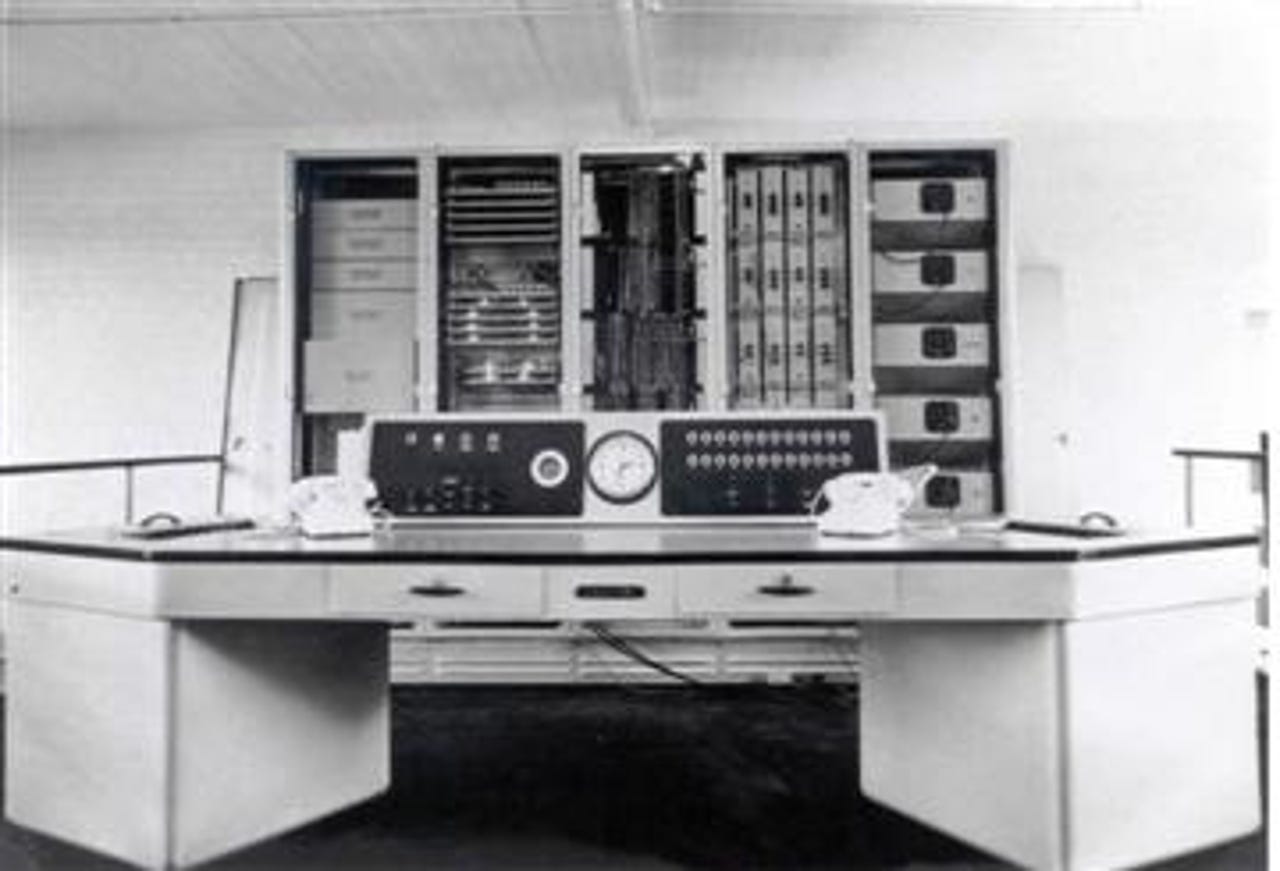Photos: Britain's best-loved computer turns 50


Ernie: The evolution of the premium bonds linchpin
This year sees the 50th birthday of the UK's best-loved computer, premium bonds number picker Ernie, short for Electronic Random Number Indicator Equipment.
Fifty years ago, the original Ernie, above, was commissioned to pick out the random numbers that were to choose premium bonds winners. The machine was built by engineers in Dollis Hill, north London and then moved to Blackpool - the seaside town that has remained Ernie's permanent home ever since.
Like many of its contemporaries in the computing world, Ernie was no small fry. The machine filled a room, cost £25,000 in old money to build and took 10 days to make the draw.
According to a National Savings and Investment (NS&I) spokesman, Ernie picks the lucky winners by a system of white noise. The machine creates entirely random white noise, with each 'blip' corresponding to a number between one and nine. "The same principle has remained all the way through the Ernies," he told silicon.com.
Photo credit: NS&I
By 1973, Ernie 1 was coming to the end of its life, not able to keep up with the growing numbers of premium bonds the public were purchasing.
Ernie 2, built by Plessey, took over number picking duties. By now, Ernie was well-known in British households and pensioners visiting Blackpool would stop by for a look at the machine as it made draws.
As result, Ernie not only had be hot at crunching numbers, it had to look hot as well. NS&I's spokesman said: "Ernie 1 was functional, Ernie 2 looked a bit space-aged and futuristic. It was designed to look something out of the movie Goldfinger."
Photo credit: NS&I
By 1988, Ernie 2 had, like it predecessors, begun to be too slow for the task at hand and was retired in favour of Ernie 3.
Ernie 3 also need more processing power to keep up with the growth in the number of bonds, which increased from a nine-number identifier to a 10, with an 11-digit identifier soon to follow.
Both Ernie 3 and its successor were built by LogicaCMG.
Photo credit: NS&I
Alas, as Moore's Law took effect, Ernie shrank, and the Ernie theatre disappeared along with the pensioners who visited it. "We recently rebuilt the environment Ernie sits in - Ernie didn't need a theatre when something that was the size of a bus becomes something the size of a DVD player," said NS&I's spokesman.
The new, petite Ernie 4 can process 3.5 million numbers in a hour and, like the Ernies before him, was scrutinised with a number of internal tests before taking over the reins as the principal machine.
Like any other self-respecting computer, Ernie has its outages, with draws stopping as a result. Data is backed up, though, said NS&I, historically on paper and then to disc, meaning no data has ever been lost.
Photo credit: NS&I
Despite all the changes, Ernie 4 - its motherboard is pictured here - still has its fans.
Ernie is regularly sent letters and cards, as well as some more unusual gifts, including castor oil, laxatives and holy water. Currently Ernie is being deluged by cards to celebrate its impending half-century.
Photo credit: NS&I